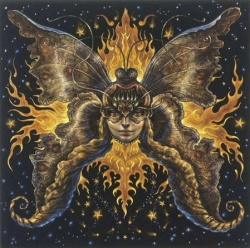Difference between revisions of "Zen in Art (China)"
m (1 revision: fix) |
|||
| Line 1: | Line 1: | ||
[[File:-08-6.jpg|thumb|250px|]] | [[File:-08-6.jpg|thumb|250px|]] | ||
| − | [[Zen]] Buddhism flourished as a dynamic intellectual force during the Tang dynasty (618-906 A. D.) in China. The philosophy of [[Zen]] was embraced by Chinese scholars - officials, poets and scholar-amateur painters. Scholar-amateur and monk painters executed highly original, spontaneous and abbreviated ink paintings. The artist Dong used Zen concepts to distinguish between 'art' ( Southern school) and 'craft' ( Northern School). Like Zen, art cannot be precisely defined. Like a Zen awakening, the artist creates with originality from within. 'Art', it was thought, was not measured by achievement in the gradual mastery of technical skills and conventions. These were associated with 'craft'. Thus in the Mountain Landscape, Dong has created a highly original and revolutionary work. The austere, solitary, semi-abstract landscape does not so much represent an actual place as express the artist's inner spiritual world. In this inner landscape, the human figure, a reminder of the banal and dusty world, is excluded. It is refreshing in its strength, intensity and apparent child-like awkwardness. | + | [[Zen]] [[Buddhism]] flourished as a dynamic [[intellectual]] force during the {{Wiki|Tang dynasty}} (618-906 A. D.) in [[China]]. The [[philosophy]] of [[Zen]] was embraced by {{Wiki|Chinese}} [[scholars]] - officials, poets and scholar-amateur painters. Scholar-amateur and [[monk]] painters executed highly original, spontaneous and abbreviated ink paintings. The artist Dong used [[Zen]] concepts to distinguish between '[[art]]' ( Southern school) and 'craft' ( [[Northern School]]). Like [[Zen]], [[art]] cannot be precisely defined. Like a [[Zen]] [[awakening]], the artist creates with originality from within. '[[Art]]', it was [[thought]], was not measured by [[achievement]] in the gradual [[mastery]] of technical skills and conventions. These were associated with 'craft'. Thus in the Mountain Landscape, Dong has created a highly original and revolutionary work. The austere, {{Wiki|solitary}}, semi-abstract landscape does not so much represent an actual place as express the artist's inner [[spiritual]] [[world]]. In this inner landscape, the [[human]] figure, a reminder of the banal and dusty [[world]], is excluded. It is refreshing in its strength, intensity and apparent child-like awkwardness. |
{{R}} | {{R}} | ||
[http://www.ngv.vic.gov.au/artofzen/ed_zen_history.html www.ngv.vic.gov.au] | [http://www.ngv.vic.gov.au/artofzen/ed_zen_history.html www.ngv.vic.gov.au] | ||
Latest revision as of 10:45, 17 September 2013
Zen Buddhism flourished as a dynamic intellectual force during the Tang dynasty (618-906 A. D.) in China. The philosophy of Zen was embraced by Chinese scholars - officials, poets and scholar-amateur painters. Scholar-amateur and monk painters executed highly original, spontaneous and abbreviated ink paintings. The artist Dong used Zen concepts to distinguish between 'art' ( Southern school) and 'craft' ( Northern School). Like Zen, art cannot be precisely defined. Like a Zen awakening, the artist creates with originality from within. 'Art', it was thought, was not measured by achievement in the gradual mastery of technical skills and conventions. These were associated with 'craft'. Thus in the Mountain Landscape, Dong has created a highly original and revolutionary work. The austere, solitary, semi-abstract landscape does not so much represent an actual place as express the artist's inner spiritual world. In this inner landscape, the human figure, a reminder of the banal and dusty world, is excluded. It is refreshing in its strength, intensity and apparent child-like awkwardness.
